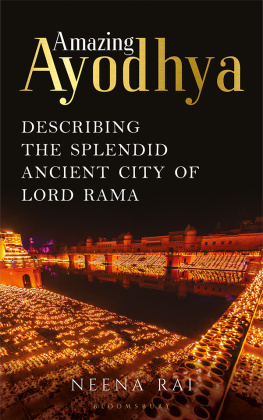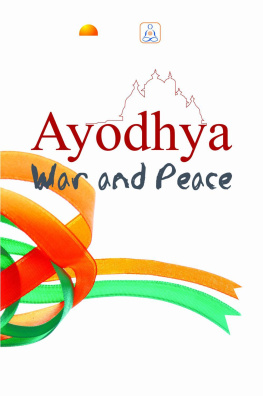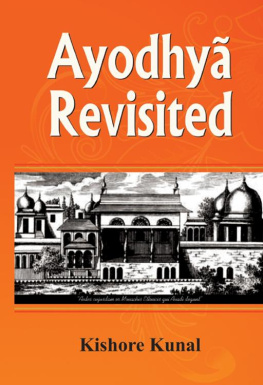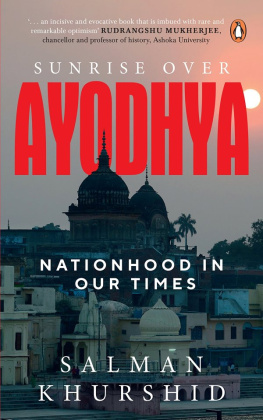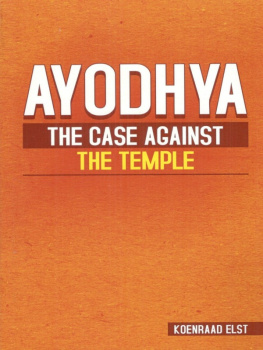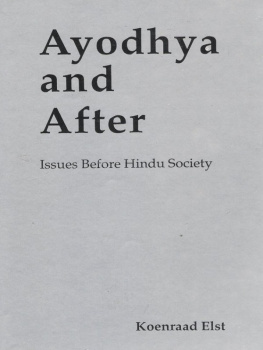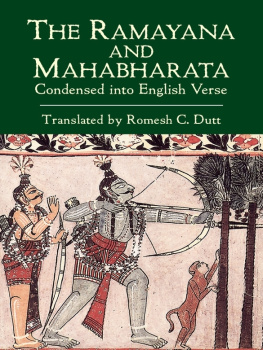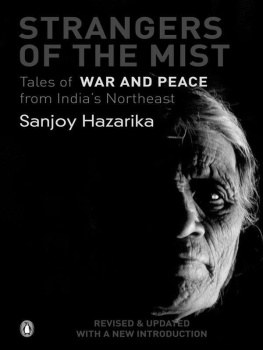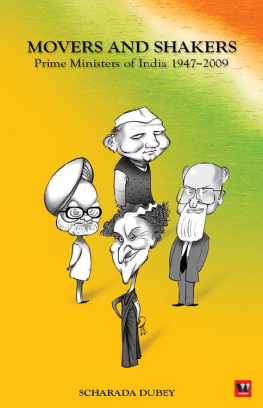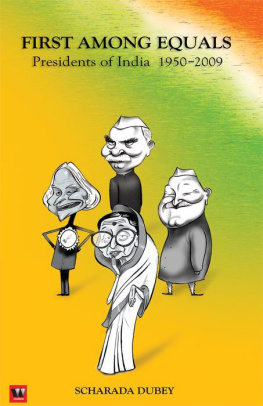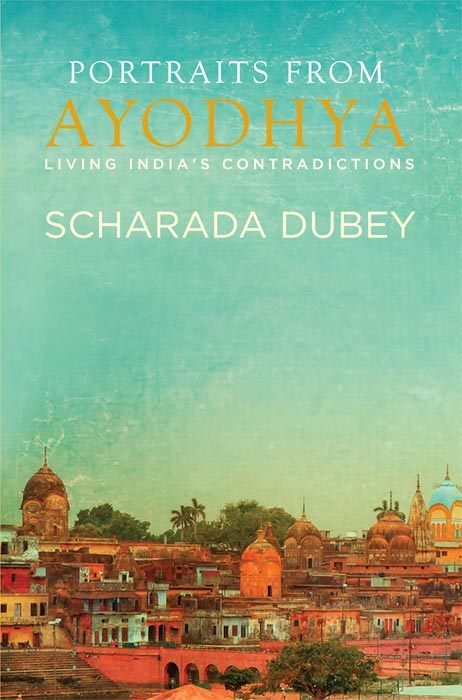
Portraits From Ayodhya
Scharada Dubey has been a college lecturer, a radio announcer and a producer of video features for television. As Scharada Bail, she has penned several childrens books, including travelogues such as Footloose on the West Coast and Malwa On My Mind, and biographical volumes like Icons of Social Change and Growing Up. Scharada set up the Sahriday Samiti in Faizabad, Uttar Pradesh, to work for the resolution of man-animal conflicts, which led to the title, Monkeys in My Backyard (Scholastic, 2011). Scharada now lives and works in Lucknow.
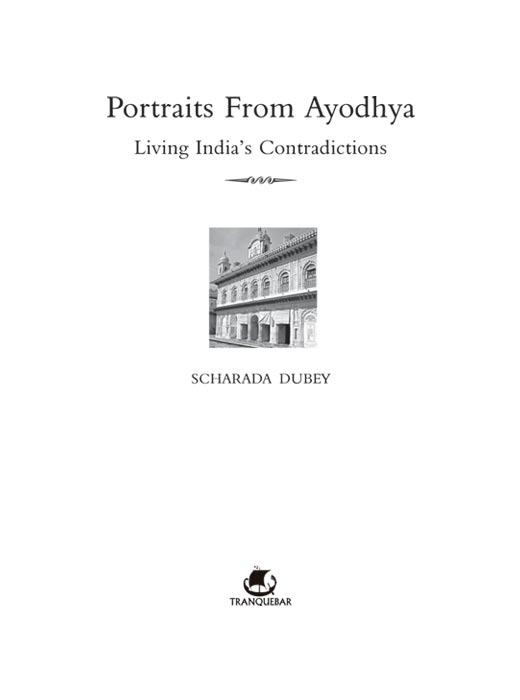
TRANQUEBAR PRESS
An imprint of westland ltd
Venkat Towers, 165, P.H. Road, Maduravoyal, Chennai 600 095
No. 38/10 (New No. 5), Raghava Nagar, New Timber Yard Layout, Bangalore 560 026
Survey No. A-9, II Floor, Moula Ali Industrial Area, Moula Ali, Hyderabad 500 040
23/181, Anand Nagar, Nehru Road, Santacruz East, Mumbai 400 055
4322/3, Ansari Road, Daryaganj, New Delhi 110 002
First published in India in TRANQUEBAR by westland ltd 2012
Copyright Scharada Dubey 2012
Scharada Dubey asserts the moral right to be identified as the author of this work.
All rights reserved
ISBN: 978-93-81626-21-4
Typeset in Aldine401 BT by SRYA, New Delhi
This book is sold subject to the condition that it shall not by way of trade or otherwise, be lent, resold, hired out, circulated, and no reproduction in any form, in whole or in part (except for brief quotations in critical articles or reviews) may be made without written permission of the publishers.
To
Him who resides at Hanuman Garhi
and in the hearts of all pilgrims who approach Ayodhya.
And to Gopal Krishna:
the reason I came here.
Contents
A book of this nature is intrinsically tied up with many people who lend support, encouragement, provide information or insights, and highlight any mistakes or oversights that come to their notice. Portraits from Ayodhya could not have become what it has without the cooperation of all the twenty-five subjects profiled in this book, and I am grateful to each one for the time, thoughts and hospitality they offered me.
Kanishka Gupta of Writers Side helped immensely in propelling this idea forward and putting me on the Tranquebar list! He has also kept me anchored and focussed all through the writing, and special thanks go to him.
From Faizabad and Ayodhya, thanks are also due to Shitla Singh, Suman Gupta and Amarnath Verma of the Faizabad-based newspaper Jan Morcha, senior journalist K.P. Singh, Dr Anil Singh from the Department of Hindi at Saket Inter-College, Avinash Kumar of the Ayodhya Shodh Sansthan, Ram Prakash Tripathi of Dainik Jagran, Om Prakash Pande, indefatigable guide of Ayodhya, Comrades Dinesh Singh and Vinod Singh, Dr Ramakant Pandey of Sriram Hospital, Ayodhya, and his lovely wife, Poonam, who offered me sweet sisterhood. Among the sadhus, thanks should also go to Jagadguru Purushottamacharya of the Sugriva Qila temple of Ayodhya, who was kind enough to explain some points about the Ramanuj and Ramanand traditions to me, for which I am extremely grateful. My sincere thanks to the Ayodhya Shodh Sansthan at Tulsi Smarak Bhavan, Ayodhya and the ever-friendly help provided by its manager, Avinashji.
Ravish Kumar of NDTV, whose Ravish ki Report had done such a thorough exploration of todays Ayodhya on television, and Dr Purushottam Agarwal of JNU, who made the kind offer to read some chapters also must be thanked.
Thanks are due to my friends, for cheering me on in Facebook posts, to my mother-in-law, Krishna Devi Verma, who sustained and nourished me throughout the process of interviews and writing, and most of all, to my children, Shivani and Shishir Bail, who have been with me on this from the inception, have accompanied me on some interviews, and have given me the gift of unstinting belief and support.
Finally, to my editors, Dharini Bhaskar and Renuka Chatterjee, for their patience, persistence and all-encompassing kindness.
I hope the book does justice to the immense goodwill I have received from all the above, and from dozens of unnamed people in Faizabad and Ayodhya.
SCHARADA DUBEY
December 2011
I n an iconic photograph dating back to 1999, that captures the spirit of Ayodhya like few words can, a group of people is shown standing by the steps of the Faizabad district courtrooms. In the centre is the mercurial Paramhans Ramchandra Das. Beside him stands his friend and legal opponent, Hashim Ansari. By Paramhanss side stands Zafaryab Jilani, the lawyer who has represented the Sunni Wakf Board for years. A smiling mahant Bhaskar Das of the Nirmohi Akhara stands in front of the first three. The picture captures a priceless moment when the whole group was sharing a smile over some small matter, even as they engaged in a decades-old litigation battle against one another. In Ayodhya, such contradictions exist without causing any comment. Truth lies in paradox.
The property dispute in Ayodhya, in which all these individuals were involved for years, lies at the heart of the events that have convulsed our nation from the mid-1980s. But it cannot be said to be the cause of these events. It was the manner in which this dispute was picked up and projected to the country, as a clash between two faiths, that unleashed hate and bloodshed and repeatedly tested the resolve of a secular democracy.
This book is not an attempt at tracing the steps of the movement for a Rama temple, so Ayodhya became synonymous with a troubled India. There have been several excellent studies of this, the most notable of which are Creating a Nationality: The Ramjanmabhumi Movement and Fear of the Self by Ashis Nandy, Shikha Trivedy, Shail Mayaram and Achyut Yagnik (Oxford India,
2005) and the documentary film, Raam ke Naam, made by Anand Patwardhan in 1992. Apart from these, there are valuable accounts of the build-up to the temple movement in Ayodhya itself, in the work of Peter Van der Veer, a scholar from the University of Utrecht, who lived here and observed firsthand the initial meetings organized to drum up support for the temple in 1984.
If I had any reason to write this book at all, it was to look at what has happened to Ayodhya and its people so many years after their lives were overtaken by the Ayodhya issue. But since looking at their individual portraits is an incomplete experience without having a grasp of the background of events from recent Ayodhya history, I have chosen to provide a chronology of events surrounding the Babri Masjid-Rama Janmabhoomi case, the developments that affected the lives of each of the twenty-five people profiled in this book.
The land in the Babri Masjid-Rama Janmabhoomi area came under dispute in 1885, when the first suit was filed claiming rights over it. This was done by the Nirmohi Akhara, who cite traditional rights over this land, going back several centuries to when akharas were first set up to protect the Hindu faith. Coincidentally, this was also the year the Indian National Congress was born.
Under this suit, Mahant Raghubar Das application to build a temple on land adjoining the disputed structure was rejected by the Faizabad Deputy Commissioner. An aggrieved Das then filed a title suit in a Faizabad court against the Secretary of State for India, seeking permission to build a temple on the chabutara or raised platform in the outer courtyard of the disputed structure.
Dismissing the suit, the then Faizabad magistrate announced, given that the alleged demolition of an original Rama temple by Mir Baqi had occurred over three hundred and fifty years ago, in 1528, it was too late now to remedy the grievance. Maintain the status quo. Any innovation may cause more harm than any benefit, the court had said.
Next page

